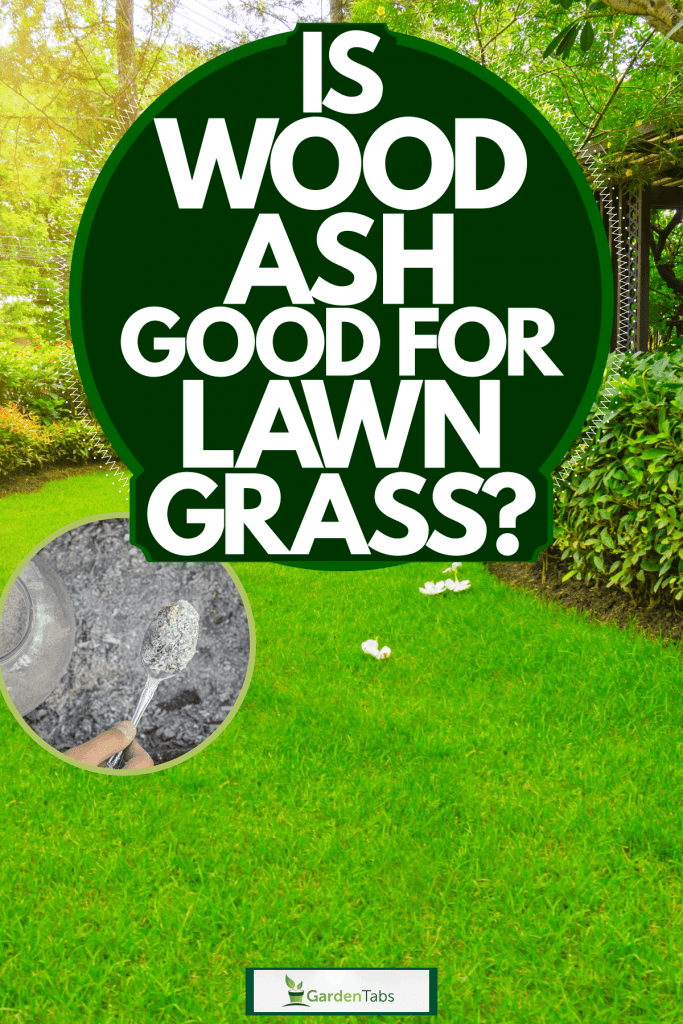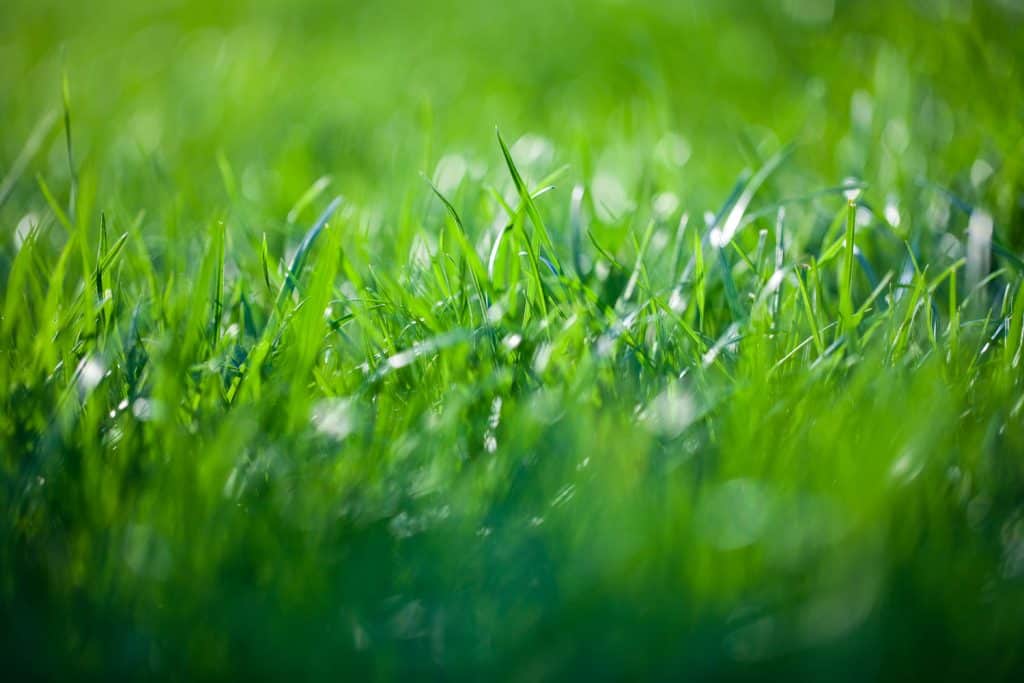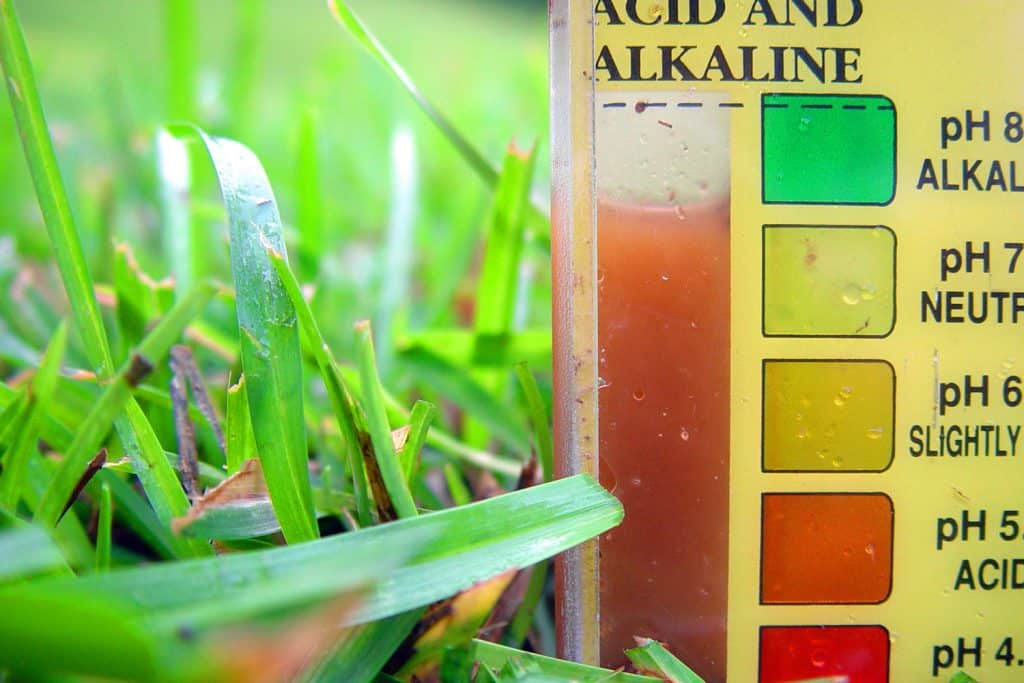Do you heat your home with a wood-burning stove during winter? Have a backyard fire pit with an excess amount of wood ash at the bottom? A little-known secret amongst gardeners is that wood ash can be used to raise the pH of your soil. We've done the research and will share our findings of using wood ash on your lawn below!
Wood ash is very effective in raising the pH of soil. This is beneficial to lawns, encouraging growth and resulting in healthy grasses. It also contains potassium, phosphorus, magnesium, aluminum, and sodium. With these added nutrients, it is considered a low-grade fertilizer. Wood ash can be a great alternative to using limestone and takes effect much faster than limestone does.
If you are interested in using wood ash as part of your lawn maintenance routine, continue reading. We will have an in-depth discussion about any possible disadvantages and grass varieties that respond best to wood ash.

Why Wood Ash
Many types of grass prefer slightly acidic soil to grow best. Most turf grasses grow best at a pH between 6.0 and 7.0. If your soil is at these levels, you do not need any wood ash, and fertilizers may better suit your situation.
However, many times fertilizers have a negative effect on the acidity of the soil. This is why many homeowners use limestone, to raise the pH in the soil. Creating a healthy growing environment for both plants and lawns, wood ashes can work just as well if not better than limestone to raise the pH and get your grass growing beautifully.

Due to wood ash's water solubility, it works much faster than lime. It can have an effect on the pH in a matter of a few short days. Lime can take six months to a year to fully take effect. For this reason, seasoned gardeners prefer wood ash to limestone.
Testing
The term pH refers to the concentration of hydrogen ions in the soil. The pH number of your soil indicates the presence or absence of minerals that are important to healthy plants and lawn growth. A soil that has a pH of 1 is very acidic (high concentration of hydrogen ions), a pH of 7 is neutral, and a pH of 13 is very alkaline.

You will want to test the pH of your soil to determine if the wood ash is even necessary. There are strips, plastic testers, and meters available for purchase. You will want to follow the manufacturer's instructions for use. If the soil tests between 6.0 and 7.0, you will NOT want to add wood ash as this can have adverse effects.
Check out this soil detector on Amazon.
Wood ash is an excellent source of potassium and phosphorous. You will want to moisten the grass before adding the wood ashes. Lightly sprinkle the wood ash on the grass and then rake it into the grass and soil. Raking aerates and stimulates the grass promoting new and healthy growth. After raking, water the grass thoroughly. Ten to fifteen pounds of wood ash will be enough to treat approximately 1,000 square feet.
Check out this soil test kit on Amazon.
Grass Varieties
There are certain grass varieties that are known to respond well to wood ash. Those grasses are as follows:
- Perennial Rye
- Fine Fescue
- Tall Fescue
- Bermuda
- St. Augustine
The following grasses generally do not respond well to wood ash as it can make the soil too alkaline for them:
- Bentgrass
- Bluegrass
- Bahia
- Centipede
- Zoysia
It is best to apply wood ash to your lawn in the fall. That way, once spring arrives, the soil will be perfect for the growing season. Test the pH of your soil on a yearly basis. Once the soil has reached a pH of 6.5 to 7.0, stop adding wood ash annually.
What are the disadvantages of wood ash?
Using wood ash can be a bit more involved than just purchasing a bag of lime. First, and most importantly, you will want to make sure you're not using contaminated ash. This means you need to make sure your ash is free from cardboard, coal, trash, and painted or pressure-treated wood. These contaminates contain harmful substances that can leech into your grass and soil and cause adverse effects for your plants, lawn, and animals.
If you do not properly apply the wood ash or you add too much, you risk causing adverse effects on your soil.
Can you use too much wood ash?
Yes, you can use too much wood ash. This is why there is a need to use it sparingly and use a light sprinkling of ash on the grass. If you raise the pH too much, it can prevent growth and kill off the lawn that is there. Wood ash raises the pH much quicker than limestone. Use it on a small section of the lawn and test the results. This way, the entire lawn is not affected if it produces poor results.
If your soil has had too much wood ash and is now alkaline, you can lower the pH with sulfur or acidic fertilizers. Sulfur is better when used on the soil once it is prepped prior to adding grass. Ammonium nitrate is usually a better bet for turfgrass. Be careful not to use products with ammonium sulfate as this can burn your grass.
Can wood ash kill weeds?
Yes, you can use wood ash to kill weeds. You'll want to be careful when using it to kill weeds though as raising the pH too much to kill off the weeds will also prevent anything else from growing. Wood ash is highly effective in killing Japanese knotweed, thistle, and kudzu.
Wood ash can also be an effective means to get rid of ant mounds and control slugs and snails. You just sprinkle a good amount of ash over the ant mound and this will force them to relocate. For the snails and slugs, you can spread the wood ash into a ring at the base of vegetable plants to prevent slugs and snails from taking up residence in your vegetable garden.
Can wood ash be composted?
Yes, this is one of the recommended ways to use wood ash. Using the wood ash in your compost pile keeps the soil acidity neutral. To compost the wood ash, distribute the wood ash into the compost pile with the appropriate amount of brown and green material.
Many gardeners use the compost on the lawn instead of the wood ash by itself. This lessens the likelihood of using too much or risking adverse effects. It also adds even more nutrients and benefits to the lawn being paired with compost. Here is a helpful video on how to use compost on the lawn:
In Closing
Who knew wood ash could be so beneficial to a lawn? If utilizing a wood stove or fire pit, wood ash is a free, readily available pH booster for your lawn. If you are looking for something that can impact the soil much faster than limestone, wood ash just might be your new tool. At the end of the day, if your lawn isn't in need, it is still a great additive to your compost. It's safe to say the days of throwing the ash out in the trash are over!
If you have enjoyed this article, please consider the following for further reading:
Can You Over-Fertilize A Lawn?


